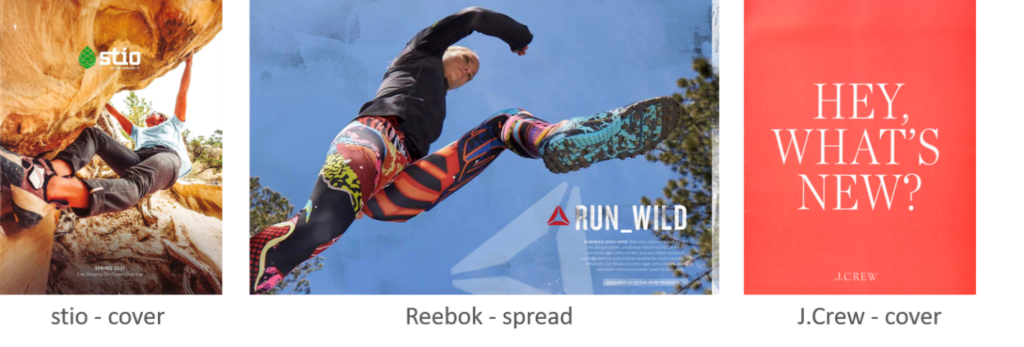
Last week I said the following to a fellow Schmidling (yes, that’s what we call each other): “Wow, we could really make their catalog sing!” What a strange idiom. Or is it?
I love listening to my favorite musicians for a reason. Yip Harbor, who wrote Somewhere Over the Rainbow, offers the reason why.
“Music makes you feel feelings. Lyrics make you think thoughts. Songs make you FEEL thoughts.”
At the end of the day, it’s our job as marketers to do the same. You’ll often hear other Schmidlings talk about creating emotion through a landscape of words and pictures. Why? Because it’s proven that people choose to purchase things based mostly on feelings, not rational thought. It’s our job to create desire by tapping into emotions.
We can learn so much from our love of music and apply it to our attempts to connect with customers. Think about how your favorite song makes you feel, and why. It’s most likely due to a musical technique that surprisingly offers us insight into how we might really connect with both customers and prospects alike.
Consider the following:
- KEY & CHORDS – Musicians choose a key in which to compose a song. The chords that make up the key set the tone for the entire song (example: it’s said that D minor is the saddest of all keys.) Similarly, it’s critical that your copy and visuals set a tone, voice or vibe, and carry it throughout. Your creative presentation must connect and resonate with your audience, even sharing cultural references they will understand. Headlines and lifestyle photography are an elegant way to create your own “key.” Most importantly, stick with it! Can you imagine The Girl from Ipanema switching mid-song to the chord progression of Muskrat Love?
Arguably, the brand that does this the very best is Duluth Trading. The tone is fun, empathic and sometimes irreverent, with every visual, headline, call-out, and even the guarantee singing from the same hymnal.
2. MODAL MODULATION – Modul modulation is a fancy way of referring to an unexpected chord deviation. Think about Penny Lane by the Beatles or Bon Jovi’s Livin’ on a Prayer. Both include key changes in the middle of the song that make your ears perk up. This technique is disruptive, causing one to pause and pay attention. It’s almost like the song is saying, “Hey, listen up! I have something important to say!” In a sea of sameness, being disruptive in your marketing is extremely successful. Do you have something important to say? Then say it boldly in a disruptive, unexpected and visual way.
Here are three fantastic examples of being disruptive. Bravo to Stio, Reebok and J.Crew!
If you are interested to know one of the most elegant key changes in all of pop music, check out the link at the end of this article.
3. CRESCENDO – This refers to a gradual increase in volume, which creates anticipation and typically leads to a payoff (think of the intro to U2’s With or Without You.) In direct response marketing, think of the crescendo as the ability to create immediate desire by tapping into customers’ emotions, then eventually moving them to act. In this metaphor, the crescendo payoff is the call-to-action, which in my opinion, is the most abused tactic of all. Think of the call-to-action as the most critical digital driver in your arsenal. It’s never enough to include just your URL or statements like, “go online for more.” A powerful call-to-action creates an emotional need, immediacy and the promise of a satisfying payoff.
Check out how Relax the Back connects with their customer, offering a personalized payoff in their call-to-action.
4. THE BRIDGE – This is the section in a musical score in which relief is provided from the repetitive nature of a song. It provides contrast in composition, maybe a new key or even a meter change. If we didn’t have bridges, think about how boring songs would become. The same goes with your direct response design, especially when creating catalogs. The eye demands relief, not only within a spread but throughout the entire catalog. This is referred to as ‘pacing’ and its primary goal is to keep the customer interested. Without pacing, it would be as if the only words in Bill Wither’s Ain’t No Sunshine were “ya know” for the entire song, not just 26 times (yes, I counted them). Sadly, most catalogs look like this, visually repeating themselves over and over and over again.
Check out these catalog spreads from the brand Allen Edmonds. While there’s certainly a common tempo, each has its own reason for being; story-telling, selling and lifestyle.
5. MEMORABLE LYRICS – Ever wonder why you’re able to memorize certain songs over others? It’s because they tell a story that most likely resonates with your own experience. Think about the sad story that Eric Carmen shares in All By Myself, or Don McLean’s American Pie taking you back to a place in time. Want customers to remember you? Storytelling is the answer. But be careful. Storytelling is more than just, well, telling a story. It’s a matter of shaping a story that perfectly melds your brand position and your customer’s cultural experience. This is much harder to do well than one might think. But once achieved, they WILL remember your story and it will resonate much deeper into your customer’s psyche.
I will always remember Athleta’s campaign, “The Power of She.” It was so unique and it resonated with women across the country. Using stories, products and imagery, the campaign became alive and memorable. While the campaign itself launched many years ago, I still remember “The Power of She” in everything they do today.

Like a songwriter, it’s your job to create the right feelings, building empathy between the brand narrative and your audience. Creating a #1 hit isn’t easy, but understanding the same cultural and personal references shared by our customers will certainly get you on the billboard charts.
Need help creating your next big hit? The team at J.Schmid are some of the best songwriters in the industry. Contact me to learn more. loisb@jschmid.com
And finally, reported as the most elegant key change in all of pop music? It happened on February 23rd, 2016 when Celine Dion sang All by Myself on a Vegas stage.
Tags: creating emotion, creative, creative design, Creative Strategy, Lois Brayfield, marketing




